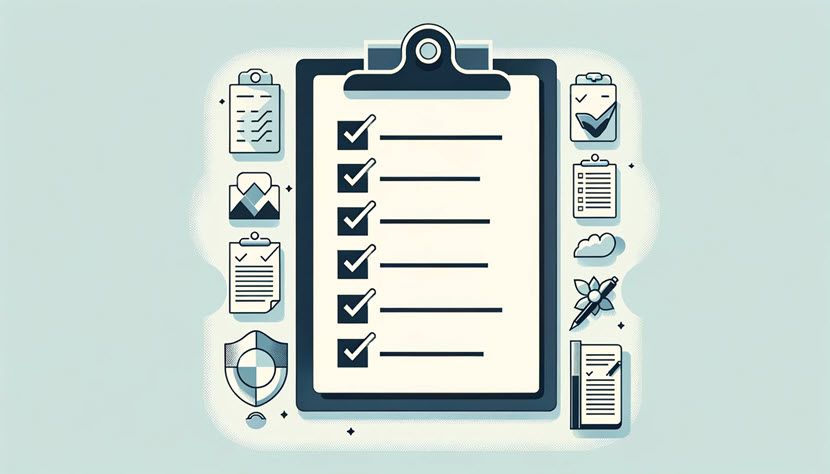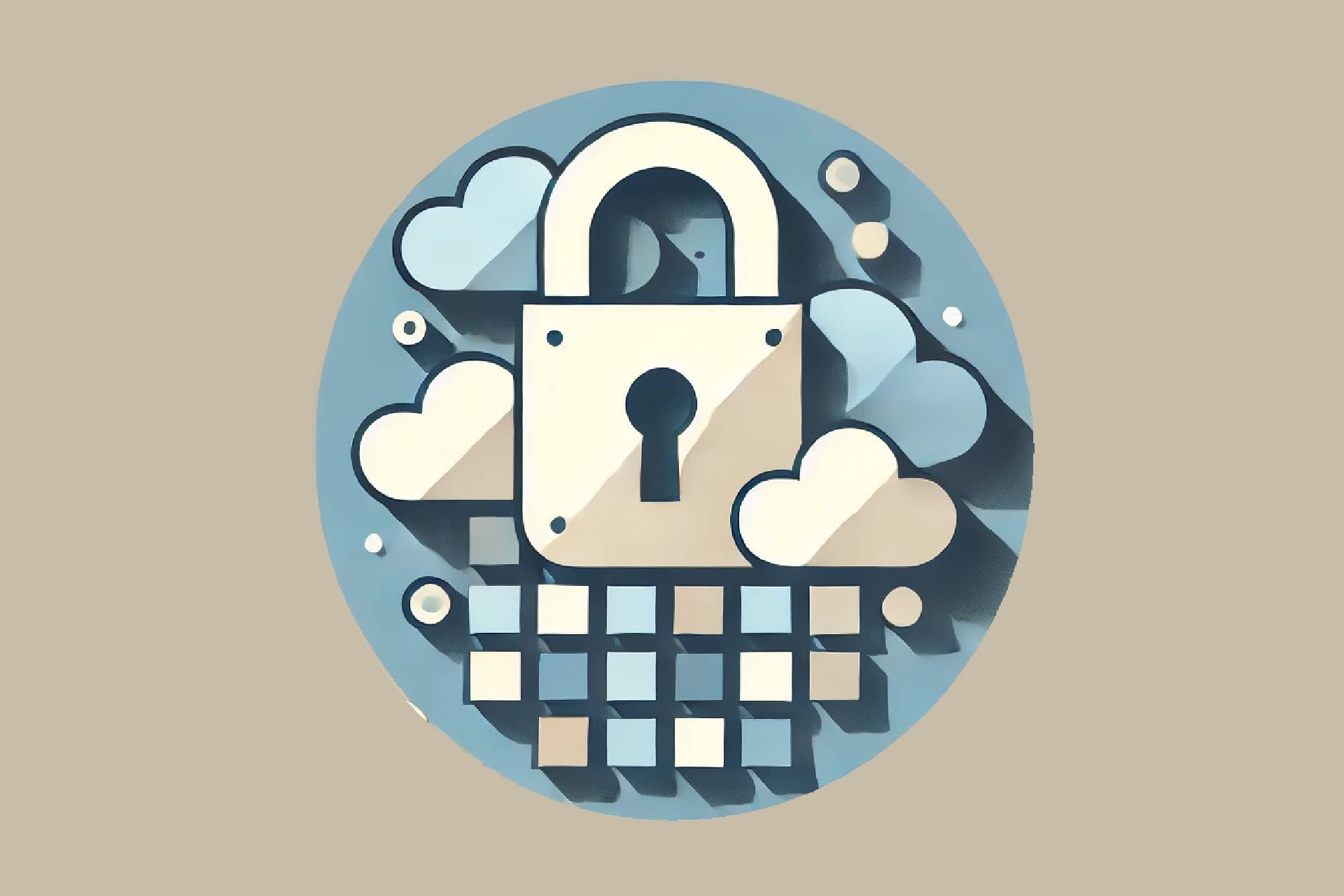Ensuring your business can withstand and recover from unexpected disruptions is essential for protecting your reputation and minimizing financial losses. These disruptions come in many forms, such as natural disasters, cyber-attacks, or other unforeseen events. Preparation is often critical in determining whether your business experiences a quick recovery or prolonged downtime.
A business continuity plan (BCP) outlines the necessary steps and resources to keep your organization running smoothly during and after a crisis, ensuring you are ready to face any challenge.
This article provides a comprehensive checklist to help you develop, implement, and maintain a robust BCP tailored to your organization's needs.

What Is a Business Continuity Plan?
A business continuity plan is a strategic framework that outlines how an organization will continue operations during and after a disruptive event. The primary goal of a BCP is to ensure that critical business functions can continue with minimal interruption, preserving the organization's ability to serve its customers and maintain its market position.
Benefits of a Business Continuity Plan
The benefits of having a business continuity plan are:
- Minimized downtime. A BCP outlines specific procedures for quickly resuming core business operations after a disruption. These procedures minimize downtime and ensure that essential services and functions continue with minimal interruption, reducing the overall impact on the business.
- Data protection. One of the core components of a BCP is data protection. Businesses safeguard critical information and systems by implementing regular data backups and secure storage solutions. These measures prevent data loss during cyber-attacks, system failures, or natural disasters.
- Reduced financial loss. Disruptions lead to significant financial losses due to halted operations, damaged assets, and lost revenue. A BCP helps mitigate these impacts by ensuring a swift and efficient recovery process, reducing the duration and severity of business interruptions.
- Enhanced customer trust. Maintaining service availability during disruptions is essential for customer satisfaction and trust. A BCP ensures that customers continue to receive the services they expect, even in the face of unexpected events.
- Regulatory compliance. Many industries are subject to regulatory and legal requirements regarding disaster recovery and business continuity. A comprehensive BCP helps businesses meet these requirements, avoiding potential legal penalties and ensuring compliance.
- Improved risk management. A BCP involves identifying potential risks and developing strategies to address them. Proactive risk management helps organizations prepare for various scenarios, reducing the likelihood of severe disruptions and enabling more effective responses.
- Preserved reputation. Prolonged downtime or inadequate responses to crises can severely damage an organization's reputation. A functional and robust BCP demonstrates readiness to maintain operations under adverse conditions.
- Better decision-making. During a disruption, timely and informed decision-making is crucial. A BCP provides a clear framework and predefined procedures, enabling business leaders to make swift and effective decisions based on the plan's guidelines.

Business Continuity Plan Checklist
Creating a BCP involves several critical steps to ensure comprehensive coverage of potential threats and effective response strategies.
The checklist below provides a detailed outline for developing a plan that effectively safeguards your business.
1. Risk Assessment and Business Impact Analysis
The first step in creating a BCP is to understand the risks your business might face and how these risks could impact your operations. This assessment involves identifying threats, evaluating their impact, and prioritizing critical business functions.
Identify Potential Threats
Assess all possible risks that might disrupt business operations, including natural disasters, cyber-attacks, system failures, supply chain disruptions, and human errors. Consider both internal and external threats and evaluate their likelihood and potential severity.
Conducting a thorough risk assessment clarifies the potential issues that could affect your business, allowing you to develop targeted strategies to mitigate these risks.
Evaluate Business Impact
Determine the potential impact of different disruptions on business operations, financial health, and reputation. Analyze how each threat might affect various aspects of your business, such as revenue loss, operational delays, customer dissatisfaction, and regulatory compliance.
A business impact analysis (BIA) quantifies the potential damage and identifies the most vulnerable areas of your operations. Understanding these impacts helps you prioritize your efforts and allocate resources effectively.
Prioritize Critical Functions
Identify and prioritize the essential business functions and processes you must restore during a disruption. Identify which operations are vital to your business's survival and focus on protecting and recovering these functions.
Prioritization ensures that you will address the most crucial aspects of your business first and minimize the overall impact of the disaster. Consider dependencies between functions and processes to ensure a comprehensive approach.
2. Develop Recovery Strategies
After assessing the risks and identifying critical functions, the next step is developing strategies to restore them.
Define Recovery Objectives
Establish recovery time objectives (RTO) and recovery point objectives (RPO) for critical functions. RTO defines the maximum acceptable amount of time to restore a function, while RPO specifies the maximum acceptable amount of data loss measured in time.
Setting clear objectives ensures that essential functions will be restored within acceptable time limits. However, these objectives must be realistic and based on thorough analysis and testing.
Create Response Plans
Develop specific response strategies for each identified risk. The strategy includes creating detailed evacuation plans, communication protocols, and data backup procedures to ensure a swift and organized response. Response plans must be tailored to different disruption types, ensuring all potential scenarios are covered. Each plan should outline the steps you need to take, the resources required, and the individuals responsible for executing the plan.
Regularly review and update these plans to keep them current.
Identify Resources
List the resources required for recovery, including personnel, technology, and third-party services. Ensure these resources are readily available and deployable quickly during a disruption. Identifying and securing these resources in advance is crucial for an effective and timely response.
These resources are not only physical but also financial and logistical. Establish relationships with vendors and service providers to ensure their availability during a crisis.
3. Establish Roles and Responsibilities
Clearly defined responsibilities are crucial for effectively implementing a BCP. It is necessary to create a dedicated team and ensure everyone understands their role in the plan.
Form a BCP Team
Create a dedicated team to develop, implement, and maintain the BCP. This team should include representatives from all key departments, such as IT operations, finance, and human resources. A cross-functional team ensures that all aspects of the business are considered in the plan.
This team should meet regularly to review the BCP, discuss potential improvements, and ensure everyone is current with their responsibilities.
Assign Roles
Clearly define roles and responsibilities for team members and other key personnel involved in the plan. Ensure that everyone knows their specific duties during a crisis. Assigning clear roles prevents confusion and ensures a coordinated response during disruptions.
Create a detailed organizational chart that outlines these roles and responsibilities, and ensure it is accessible to all employees. Regularly update the chart to reflect any changes in personnel or roles.
Develop Training Programs
Implement training and awareness programs to ensure all employees understand their roles in the BCP. Regular training keeps everyone prepared and aware of the latest procedures. Conducting periodic training sessions also ensures that employees are familiar with the plan and can execute it effectively when needed.
Training should include practical exercises and simulations to evaluate employees' knowledge and readiness. Additionally, provide resources and materials that employees can refer to anytime.
4. Communication Plan
Effective communication is essential during a crisis. A clear communication plan ensures that all stakeholders are informed and coordinated.
Develop Communication Protocols
Establish internal and external communication strategies for informing stakeholders during a disruption. You must determine the best communication methods and the information that needs to be shared. Develop templates and guidelines for different types of communications, including alerts, status updates, and instructions. Regularly review and assess these protocols.
Create Contact Lists
Maintain up-to-date and easily accessible contact lists for employees, customers, suppliers, and emergency services. Updated, readily available contact information ensures you can quickly reach everyone during an emergency. Consider using contact management software to keep these lists organized and updated.
Implement Notification Systems
Automated notification systems quickly disseminate information to relevant parties and ensure everyone receives timely updates and instructions. Automated notifications improve communication efficiency and reduce the chances of miscommunication during a crisis. Consider multiple notification methods, such as emails, text messages, and phone calls, to ensure redundancy.
5. Data Protection and Backup
Protecting your data is a critical component of a BCP. This step involves implementing a backup strategy and ensuring data security.
Implement Backup Solutions
Ensure regular backups of critical data and systems. Store these backups securely offsite or in the cloud to protect against data loss. Regular backups preserve essential information and ensure it can be recovered in case of data loss or corruption.
Develop a backup schedule specifying the frequency and types of backups. Make sure to include all critical data in the backup process and regularly verify the integrity of backups.
Managing business continuity in the cloud unlocks a new level of resilience. Scalable infrastructure, remote work capabilities, and robust data protection empower your business to weather any disruption. Read our CEO's article to learn about the opportunities and challenges of incorporating the cloud into your business continuity strategy.
Test Data Recovery
Examine data recovery procedures regularly to ensure quick and reliable restoration. Testing identifies any issues and ensures you can restore data efficiently. Periodic testing also verifies that backup systems function optimally and that you can retrieve data when needed.
Conduct full-scale recovery tests that simulate real-life scenarios and document any issues so you can take corrective actions.
Ensure Data Security
Implement robust security measures to protect data during a disruption. These measures include encryption, role-based access controls, and intrusion detection systems. Strong security measures prevent unauthorized access and protect sensitive information.
Regularly review and update security policies to address new threats and vulnerabilities. Provide security awareness training to educate employees on cybersecurity best practices and the importance of protecting sensitive information.
Backup and disaster recovery are crucial for business continuity, as they help you handle disruptions that could halt your operations. Without them, data breaches and power outages can lead to permanent data loss. Read our guide to learn how these related practices can make your business more resilient.
6. Testing and Maintenance
Regular testing and maintenance of your BCP ensures that it remains effective and relevant.
Conduct Regular Drills
Regular drills and simulations test the effectiveness of the BCP. These exercises identify areas for improvement and ensure that everyone knows their roles. Drills simulate real-life scenarios, allowing the team to practice and refine their response procedures. Vary the types of drills conducted to cover different types of disruptions and ensure comprehensive preparedness. Debrief after each drill to discuss performance and identify lessons learned.
Review and Update Plan
Continuously review and update the BCP to reflect changes in business operations, technology, and emerging threats. Regular updates keep the plan relevant and effective. You should adapt the BCP to address new risks and operational changes as the business environment evolves. Schedule regular reviews of the plan and involve key stakeholders in the review process to ensure you consider all aspects.
Document Changes
Keep detailed records of any changes made to the plan and the reasons for those changes. Documentation ensures updates are tracked and understood. Maintaining a record of changes keeps the plan consistent and ensures all stakeholders know the latest procedures. Use version control to manage changes and ensure everyone has access to the most current version of the plan.
7. Review Legal and Regulatory Requirements
Ensuring compliance with legal and regulatory requirements is crucial to business continuity planning.
Compliance Check
Ensure the BCP complies with regulatory requirements to avoid potential legal issues and ensure the plan meets industry standards. Regular compliance checks ensure the plan adheres to all necessary regulations. Consider obtaining certifications or external audits to demonstrate compliance.
Review Industry Standards
Stay updated with industry standards and best practices for business continuity planning. Adopting best practices enhances the effectiveness of your BCP. Keeping abreast of industry developments ensures the plan remains current and effective.
Participate in industry groups and forums to stay informed about the latest trends and innovations in business continuity planning. Benchmark your plan against industry standards to identify areas for improvement.
Engage Legal Counsel
Consult with legal experts to address compliance issues and update the plan accordingly. Legal counsel provides valuable insights and ensures your plan is comprehensive and compliant. Engaging legal experts also identifies potential risks and ensures the plan meets all regulatory requirements. Schedule regular consultations to review the plan and address emerging concerns.

Build Resilience with a Business Continuity Plan
A business continuity plan is essential for ensuring organizational resilience during disruptions. By following the checklist we provided, you can systematically identify risks, develop effective recovery strategies, and ensure the continuous operation of core business functions.



